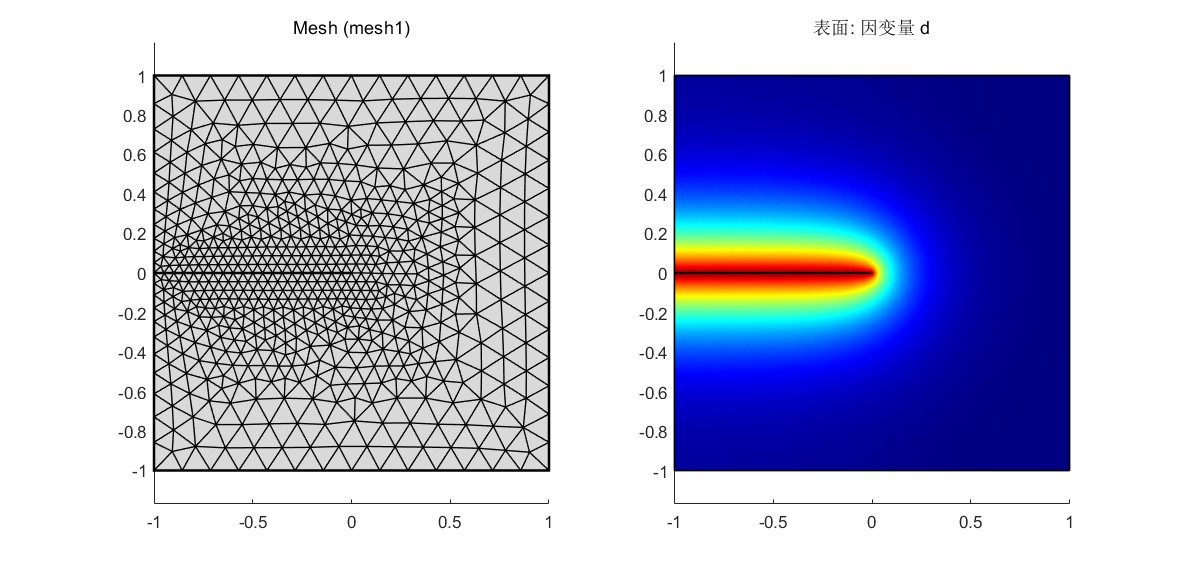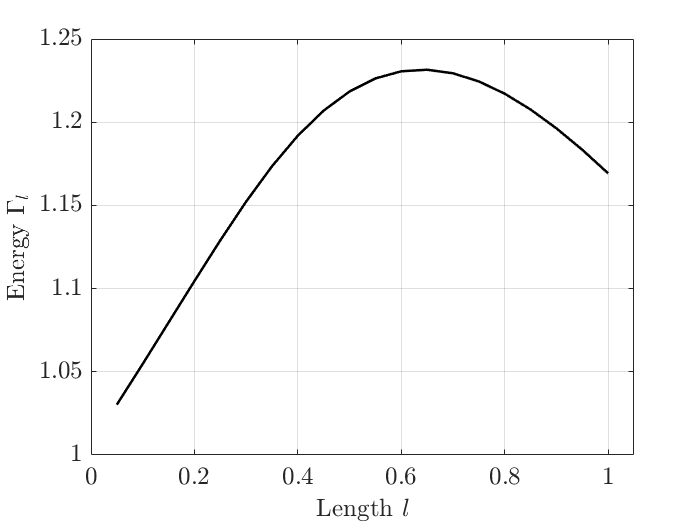COMSOL LiveLink for MATLAB 功能允许用户将 COMSOL Multiphysics 与 MATLAB 脚本环境联系起来,可以实现:
- 通过脚本设置模型
- 在模型设置中使用 MATLAB 函数
- 在 COMSOL Desktop 和 MATLAB 之间进行交互式建模
- 通过 MATLAB 控制语句调节程序流程
- 在 MATLAB 中分析结果
- 创建定制模型接口
- ······
启动
Windows:双击 COMSOL with MATLAB 图标,启动 COMSOL Multiphysics with MATLAB
MATLAB 的桌面环境将与 COMSOL Multiphysics Server 同时打开,后者以命令窗口的形式显示在背景中
Mac OS X:前往 Applications > COMSOL > COMSOL with MATLAB
Linux:在 COMSOL 安装目录的
bin文件夹中打开一个终端提示窗口,执行comsol命令:comsol mphserver matlab
使用
COMSOL LiveLink for MATLAB 是使用 MATLAB 命令来构建模型,即使用直接操作的是 COMSOL 模型对象,而不是 COMSOL Desktop。
一般有两种使用方法:
在 COMSOL Desktop 的图形化用户界面中完成建模,然后将模型另存为 M 文件,通过修改该文件来满足计算需求
可设置全局变量,并封装为函数,在 MATLAB 中进行调用
一定要在 COMSOL Desktop 中压缩历史记录,以删除建模过程中的无效操作
直接编写 MATLAB 脚本进行建模、计算、分析
学习曲线较高,不建议采用这种方法
API 命令
这里仅展示部分常用 MATLAB 中的 API 命令
mphdoc:打开 COMSOL 帮助文档(缺省值)mphdoc(model):打开节点模型的帮助文档mphdoc(model.geom,'WorkPlane'):打开几何特征 WorkPlane 的帮助文档mphlaunch:将正在运行的模型从 MATLAB 提示窗口连接到 COMSOL Desktopmphgeom(model):在 MATLAB 图像窗口中显示当前对象的几何mphmesh(model):在 MATLAB 图像窗口中显示当前对象的网格ModelUtil.showProgress(true):显示求解和网格运算的进度条mphplot(model,'pg','rangenum',1):在 MATLAB 图形中显示包含颜色条的绘图组rangenum对应于绘图组pg中的绘图类型序号mphsave(model,'<path>\busbar'):将模型保存到<path>路径下的busbar文件中,默认的保存格式为 COMSOL 二进制格式,扩展名为 mphmphsave(model,'<path>\busbar.m'):将模型保存成 M 文件
示例
采用《相场损伤模型》中的物理模型,即 \[ \begin{cases} d-l^2\Delta d=0&~\mathrm{in}~V\\[5pt] \nabla d\cdot\boldsymbol{n}=0&~\mathrm{on}~\partial V\\[5pt] d(\boldsymbol{x})=1&~\mathrm{on}~\Gamma \end{cases} \] 对于边长为 2 的正方形(二维)求解域进行计算。
在 COMSOL 中将特征长度参数 \(l\) 、裂纹边的最大单元大小 \(l_e\) 设为全局变量,并在派生值中定义能量耗散函数 \[
\Gamma_l(d)=\frac{1}{2l}\int_{V}\big(d^2+l^2\nabla d\cdot\nabla d\big)\mathrm{d}v
\] 完成建模等设置后,将模型另存为 M 文件,并进一步将其修改为函数 PFD_PDE(L,EL) ,代码如下:
1 | % 输入 |
在函数 PFD_PDE(L,EL) 的基础上,可以做出更多的扩展计算。
计算绘图
给定 L 和 EL 后可调用函数 PFD_PDE(L,EL) ,计算得到模型对象的句柄 MODEL 。进一步利用 API 命令 mphmesh 和 mphplot 得到网格和相场云图,代码如下:
1 | clc;clear;close; |
上述代码运行结果如下:

封装调用
给定 EL 并遍历 L ,调用函数 PFD_PDE(L,EL) ,可得特征长度参数 \(l\) 与能量耗散函数 \(\Gamma_l\) 的数值映射表,代码如下:
1 | clc;clear;close; |
上述代码运行结果如下:

显然函数 \(\Gamma_l(l)\) 在 0.6 附近存在一个局部极大值,于是可调用 MATLAB 中的粒子群优化函数进行求解,代码如下:
优化函数
fmincon需要目标函数的导数信息(给定解析导函数 或 求数值导数),而这种基于有限元计算得到数值,其连续性不佳,导致函数fmincon无法得到较好的优化结果粒子群优化函数
particleswarm则不需要目标函数的导数信息,以随机地形式寻找全局最优
1 | clc;clear;close; |
上述代码运行结果得到:Lmin = 0.6396
更多应用
- 用于 Simulink 仿真
- 利用 MATLAB Guide 或者 App Designer 制作 GUI
- ······